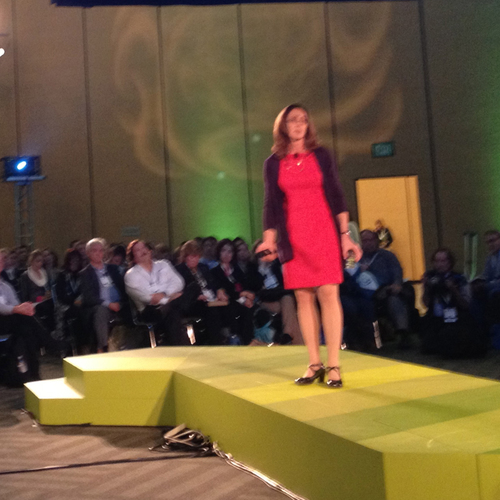
Image Credit: Martin Holladay
The crowds at the GreenBuild conference in Toronto are daunting; according to USGBC, there are 23,000 attendees this year. As an indefatigable journalist, however, I’ve managed to survive the crush to board the escalators and have patiently waited my turn in the long lines that form to use the rest room.
If you’re interested in new products, check out my photos from the trade-show floor.
If you want to get a flavor of some of the information provided in the presentations, I’ve culled a few memorable quotes for you to enjoy.
Just say no to screen savers and little hot water heaters
Rob Watson of EcoTech International: “Here’s a common myth: ‘Screen savers save energy.’ Actually, screen savers prevent a computer from going into sleep mode, so they account for most of the energy waste in computers. Here’s an idea: ban them.”
Thomas Green, the project manager for CMHC’s Equilibrium Housing program: “With 24 inches of attic insulation, an attic hatch becomes an attic tunnel.”
Hazem Rashed-Ali, a professor at the University of Texas at San Antonio: “The homeowners have an instantaneous water heater in the kitchen. It’s one with a small tank, designed to produce very hot water for beverages. The water is kept constantly hot. The energy consumption was really high. That little heater was pulling 7 or 8 kWh per day. It was working constantly, even when no one was home.”
Stephen Carpenter of Enermodal Engineering: “It turns out that utility energy for our office building makes up only 15% of our business’s carbon footprint. Commuting represents 33% of our carbon footprint, while business travel is 21%.”
Once again, energy nerds are irritated by unpredictable occupants
Robert Buckley from Aecom, describing the energy monitoring results for ZEBRA, an office building in the U.K.: “The building was…
Weekly Newsletter
Get building science and energy efficiency advice, plus special offers, in your inbox.

This article is only available to GBA Prime Members
Sign up for a free trial and get instant access to this article as well as GBA’s complete library of premium articles and construction details.
Start Free TrialAlready a member? Log in















2 Comments
Ban Screensavers?
It's interesting how some ideas have unforeseen consequences. While banning screensavers sounds innocuous enough, I'm sure the folks over at the Berkley Open Infrastructure for Network Computing might have a different take on the usefulness of screensavers. Not to mention the many research projects, such as SETI, Collatz, malariacontrol.net, and others that use BOINC to access the power of distributed network computing to do their research.
main link to BOINC: http://boinc.berkeley.edu/
research projects that rely on BOINC: http://boinc.berkeley.edu/projects.php
Response to Paul W.
Paul,
Good point. Some idle computers are truly idle; if such computers aren't in sleep mode or off, they are wasting energy. Other computers that appear to be idle may be contributing to research projects using the pooled computing resources of thousands of volunteers.
Once again, your point reminds us that any energy-saving measure must be carefully thought out. Intelligence and actual thinking are always required.
Log in or become a member to post a comment.
Sign up Log in